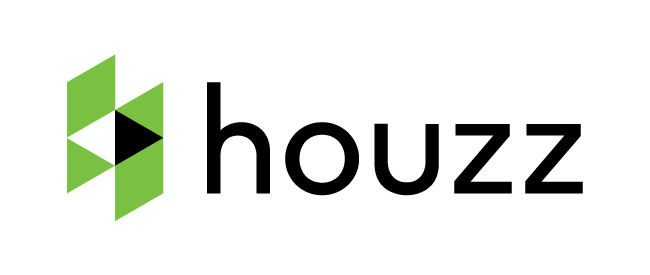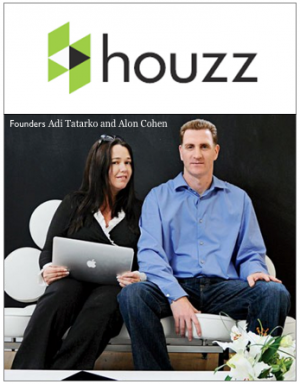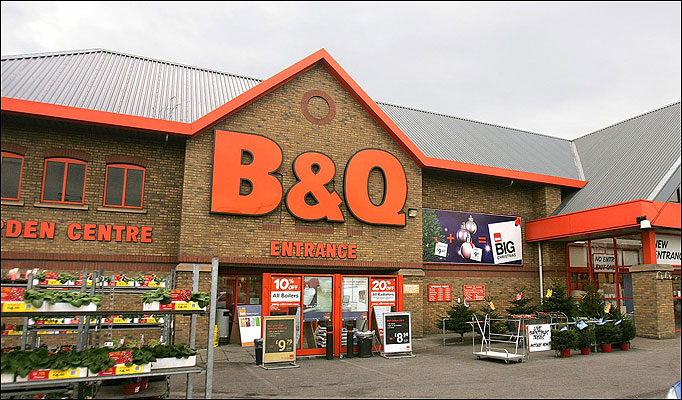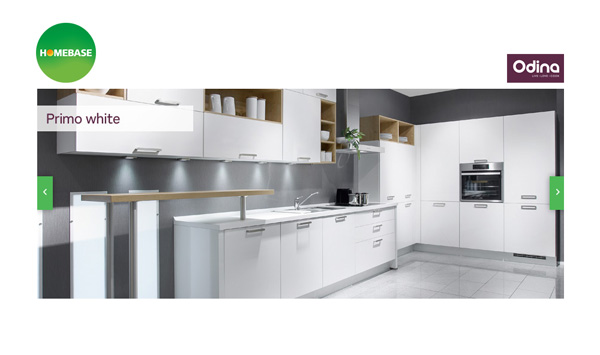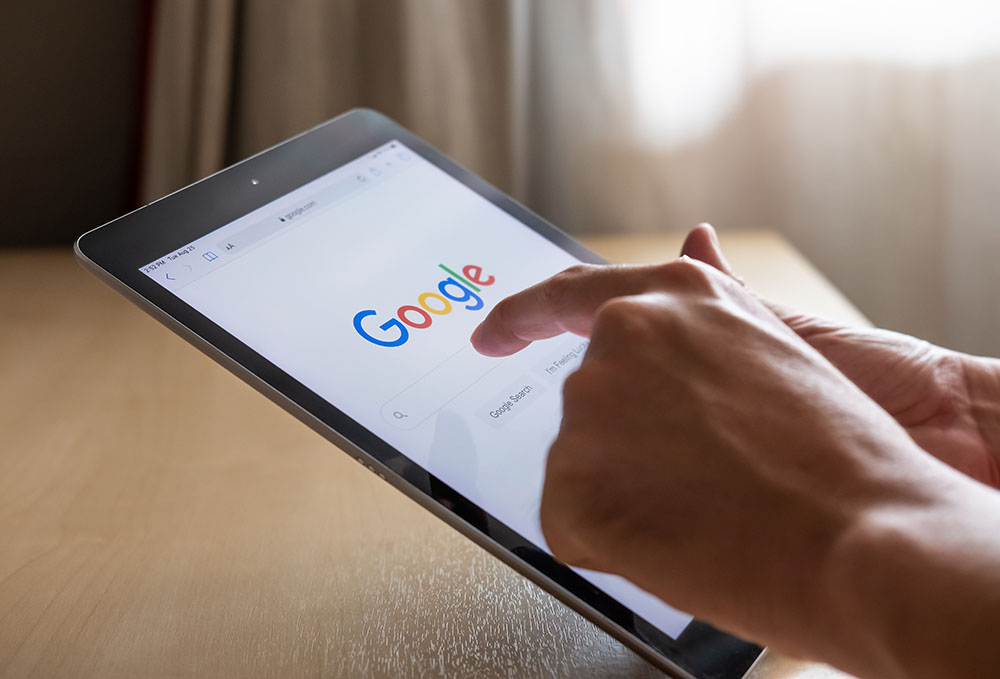“We’re not typical founders,” says Adi Tatarko, poking at a paper-plate lunch of diced tomatoes and cucumbers. “We’re simple people. We don’t come from privileged backgrounds.” The chief executive officer of Houzz is doing her best to dodge any discussion of the economic gains that she and her husband, Alon Cohen, have created with their home design website. He’s mum on the topic, letting her talk while spearing some falafel with his plastic fork.
Just five years after starting Houzz at their kitchen table, the two Israeli immigrants have produced one of the top 200 Web properties in the U.S. If you’re a homeowner looking for dreamy new ideas for your kitchen remodel or if you’re a designer wanting to drum up business, Houzz may well be your happy place. Each month Houzz draws more than 25 million visitors to its endlessly shoppable photo galleries, more traffic than retailing giants such as Nordstrom, Gap and Staples enjoy. Venture investors, betting that Houzz will capture big chunks of the $300 billion global design and decor market, now value the company at more than $2 billion. To the founders’ professed astonishment, their combined stake of nearly a third of the company puts their combined net worth meaningfully north of $500 million.
In Silicon Valley’s bro-coder culture, it’s rare to find a female executive at the top, let alone a couple who started dating in the 1990s and still share takeout lunches most days of the week. Among venture-funded companies, only 13% have a female cofounder, Pitchbook reported last year. Even when funding occurs, women-led startups often make do with less capital than their male-run counterparts. Yet Tatarko and Cohen have raised more than $200 million in venture capital, including a $165 million whopper of a round negotiated earlier this year. Tatarko runs Houzz with a style that makes no apologies for her gender or her nontechnical background. Instead, she blends razor-sharp strategic thinking with down-to-earth gestures that help rally other people to her way of doing things.
Houzz’s first client was Tatarko herself, trying to get ideas for remodeling their four-bedroom ranch house in Palo Alto, Calif. Even today Houzz avoids talking up trophy homes in favor of showing people ideas that feel right for their own neighborhoods. “We like founders who build companies to solve problems in their own lives, even if they aren’t experts in the field,” says Alfred Lin, a Sequoia Capital partner who began funding Houzz in 2011. “They unpack issues in a way that people in the industry have never unpacked them. They see things that everyone else misses.”
So far investors have been eager to bankroll Houzz on the expectation that the site’s huge consumer base is bound to pay off somehow. With just over 300 people on its payroll Houzz has largely covered costs to date without rushing into an aggressive moneymaking strategy. One handy source of cash has been the annual listing fees–typically $2,500 to $4,000–paid by several thousand architects and designers for extra visibility in Houzz’s regional directories. A bit more money trickles in via paid listings for big manufacturers and retailers, such as Kohler and Ikea.
In late September Houzz unveiled a test of its big-league revenue play: a marketplace in which consumers can click to buy whatever bathtubs, sofas or other delights they see on the site. That’s likely to put pressure on existing online retailers of home decor such as Wayfair and One Kings Lane. The incumbents spend a lot on marketing to woo customers, while also enduring the hassles of overseeing supply chains. By contrast, Houzz keeps increasing traffic by word of mouth and has attracted 1 million listings by acting strictly as a go-between. Instead of stocking inventory, Houzz routes orders to the appropriate manufacturers or retailers while collecting a 15% commission. Houzz’s customer-service team will patrol vendors’ ability to make good on customers’ orders. With far more traffic than the incumbents, Houzz could reach $1 billion in sales easily in the next five years–if it can turn all those browsers into buyers.
Once Tatarko and Cohen break from their lunch, they head to separate corners in the company’s big, open-plan offices in Palo Alto. Company President Cohen sits in the heart of engineering-land, obsessively tweaking the website and tablet app. He and developer Guy Shaviv have filed a patent on some of Houzz’s features, such as little green information tags that are attached to buyable products in millions of photos, inviting viewers to click for more details. To avoid having the tags look like aggressive advertisements, Shaviv arranged for them to sway like tiny Christmas ornaments in the mobile version. Hidden algorithms create dozens of pendulum arcs that can govern each tag. No two wiggle at the same rate.
Tatarko, meanwhile, sits at a sparse white desk in the editorial department. Perched atop her monitor is a row of tiny rubber ducks, a gift from one of Houzz’s engineers. The 42-year-old CEO keeps them on display so everyone knows it’s all right to be playful at work. On Fridays Tatarko serves her ritual cake and ice cream for the employees celebrating a birthday that week. Don’t mistake that bonhomie for an eagerness to please. When serious issues arise, Tatarko turns into a verbal tornado, prevailing over even the most garrulous, deep-voiced male. “I’m a woman, so I’m more emotional,” she says.
Adi Tatarko grew up in Israel in a family of ambitious working women. Her mother sold real estate; her grandmother had been a prominent fashion designer, flying abroad for exhibitions when women simply didn’t do such things. “I was fascinated how she juggled everything so well,” Tatarko says. “I was so proud of her.”
Tatarko graduated in 1996 from the Hebrew University of Jerusalem with an international studies degree and hazy plans to travel and “make ugly places beautiful.” Rambling through Thailand with two girlfriends, she ended up on a 15-hour bus ride from Bangkok to the island of Koh Samui. (“We didn’t have enough money to buy plane tickets,” she recalls.) She sat in front, keeping her distance from three young Israeli men in the back. But the driver wanted the front seats empty, so he tugged her toward the back and deposited her next to a tall redhead, Alon Cohen.
“We talked nonstop for the whole bus ride,” Tatarko says. “It was like four dates, one after another. It was wonderful.” (Cohen remembers that she did most of the talking.) The two of them stuck together for the rest of the vacation. When they got back to Israel, they opened a small tech-services company, PROmis Software. In 1998 they married and shortly afterward moved to New York, where both saw better opportunities. They kept heading west: By 2001 they were in Silicon Valley, where Cohen wound up running engineering teams at eBay that worked on everything from monetization strategies to application programming interfaces, or APIs, which make it easier for outsiders to work with eBay’s data. Tatarko’s ambitions took a backseat: Her first son was born in 2002; another followed in 2006. She worked part-time for Commonwealth Financial, coaching clients on how to manage their money.
The idea for Houzz emerged from the couple’s three-year struggle to get their own home renovation organized properly. They were amazed, and then fiercely motivated, by the fact that even after a 15-year stampede of consumer Internet startups nobody online had solved such a big, common need. Penny-pinchers by nature, they allotted just $2,000 a month for the task. He worked next to the kitchen, coding the site. She drummed up content, coaxing a former Sunset magazine editor to join her. In an early chat Tatarko scrunched down on a beanbag chair and spelled out the site’s guiding philosophy: “Be welcoming. Don’t hunt for one official sense of taste. Stay away from celebrity homes. This isn’t about unrealizable fantasies. It’s a site where users can see realistic ideas for their own homes.” Houzz became an explorer’s haven, letting jittery homeowners browse as long as they choose, gradually sharpening their tastes and budgets until they could say with confidence: “Here’s what we want.”
While traffic originally came mostly from the Bay Area, word of mouth soon brought a global following. Architects and interior designers clamored to post photos, giving the site a trove of free content and ideas. Stampeded by new visitors, Alon Cohen realized in late 2009 that he had reached a crossroads. Houzz couldn’t be a weekend hobby anymore. The fast-growing company needed 20 servers to sustain its likely data load. It needed full-time engineers and full-time editors. Cohen was going to have to quit eBay, and Houzz needed far more cash than Tatarko and Cohen were dribbling into it.
Where to turn? “Adi and I were scared of venture capitalists then,” Cohen recalls. It was clear that the couple could turn a small profit by jamming the site full of ads, or by insisting that architects and clients pay extra to learn enough about each other to get connected. Tatarko refused both choices. She wanted to spend at least a year or two making Houzz the friendliest, smoothest site possible, free of charge, before worrying about revenue. Neither founder wanted to take money from a financier who might arm-twist them to put profits ahead of quality.
Safety arrived in Oren Zeev, a Silicon Valley angel investor recommended by a mutual, Israeli-born acquaintance. He promised the Houzz founders they would stay in charge. He would focus on supporting their vision. In July 2010 he led a syndicate of investors that took a 35% stake for $2 million. Venture capitalists followed later; so did individual funders such as David Sacks, the cofounder of office-productivity tool Yammer, who fell in love with Houzz while gut-rehabbing a San Francisco town house. “We’d start scrolling through pictures, and we couldn’t stop,” he recalled.
The iPad’s debut that April confirmed the power of Houzz’s photo-rich content, which was just right for bedtime tablet browsing or lunchtime chats between architects and their clients. Well before the iPad’s splashy debut in April 2010 Cohen and former eBay buddy Guy Shaviv set out to release a killer app the day the tablet launched. Cohen’s first version was a “bad” product in his mind, so perfectionist Cohen vowed to create an upgrade that would, at least, be “not bad.” To his surprise, customers started cheering right away. Houzz’s first iPad app won 4.5 out of 5 stars; later versions scored a perfect 5. People download the app incessantly, and many log on more than 100 times a month. Architects and interior designers no longer lug big binders to client meetings. They show up with iPads running Houzz. “I don’t think we could get that many business leads any other way,” says Mike Close, who runs Spinnaker Development, a luxury home builder in Orange County, Calif. “In fact, we update our Houzz profile even before we add something to our website.”
Even so, the temptation to sell ads persisted. Zeev was intrigued by the idea, and to some extent so was Cohen. Tatarko refused. “She was adamant,” Zeev says. “She made it very clear that bringing in advertising so soon would compromise the user experience.” The resolution: Houzz would stay ad free and make its finances work by keeping a tight rein on spending. Tatarko led by example, flying coach on cross-country flights even in 2013, when she was pregnant with her third child.
As the uncluttered, ad-free site continued its torrid traffic growth, Houzz raised bigger sums for the battles ahead. These days international expansion is top of mind for Tatarko. She has opened sites for the U.K. and Australia, with additional ones coming soon for France and Germany. Regional editors are hard at work, rejiggering American terms such as “siding” and “backsplash” into their rightful Aussie equivalents (“cladding” and “splashback”). Tatarko says she wants Houzz to accelerate the global flow of design ideas, so that a cleverly configured kitchen in Milan can inspire homeowners in North America and Asia, too.
What could go wrong? Angel investor Zeev frets that the founders, especially Tatarko, might stretch themselves too thin. Twelve-hour workdays are routine, but Tatarko and Cohen are parents, too, and both insist on finding time somehow to be with their three sons (ages 12, 8 and nearly 1). “They’re juggling,” says Zeev. “Other than work and family, they really don’t have a life.” Many nights Cohen works late and Tatarko dashes home to join the boys for dinner. When Tatarko travels on business, they reverse roles. No Davos, no charitable boards, no vacation homes.
Instead of hiding these work-life strains, Tatarko shares them freely. “I love to cook,” she confides. “But there just isn’t time for me to do that myself anymore. So I’ve given my recipes to someone who makes them instead. I’m trying, I’m trying,” she adds. “I hope I’m doing the right thing.”
One bright spot for Tatarko involves reading Harry Potter novels to her middle son as a bedtime treat. Cohen plays basketball regularly with oldest son Ben. And there’s a new rule at home, calling for everyone to unplug from devices during family time. Still, Tatarko says, there are times she wakes up at 2 a.m. “I’ll think: Did I schedule that playdate yet? And then I’ll suddenly realize that there’s another slide I need to make for the next board meeting.”
To the parents’ surprise, when they began talking about remodeling their driveway, Ben confronted them with a Houzz IdeaBook showing all the different ways that the driveway could be transformed into a partial basketball court. Not exactly practical for a two-car family, but that wasn’t his problem.
“What could we do?” Tatarko shrugged. “We arranged for him to have a meeting with the architect. And the architect listened very seriously to Ben’s ideas”–eventually coming up with a design that his parents couldn’t refuse.
This story appears in the November 3, 2014 issue of Forbes.com
Written by Forbes Contributor George Anders. Opinions expressed by Forbes Contributors are their ow
